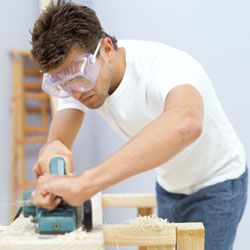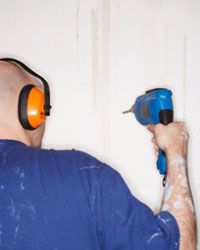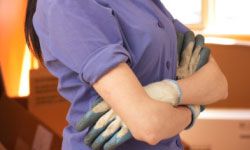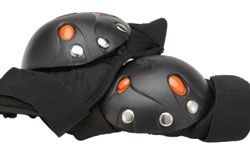At some time or another, most of us take on a home improvement project. Think about your last undertaking. Whether you acted of your own volition and built that intricate mosaic end table you've been dreaming of, or you acted out of necessity and fixed a leaky faucet, chances are you could have benefited from some safety gear. Even if you're no handyman and you don't seek out opportunities to fix or build things, you should still keep some staple pieces of protection equipment on hand for when DIY projects come up. These five core items will help keep you safe and make your job easier!
Advertisement





